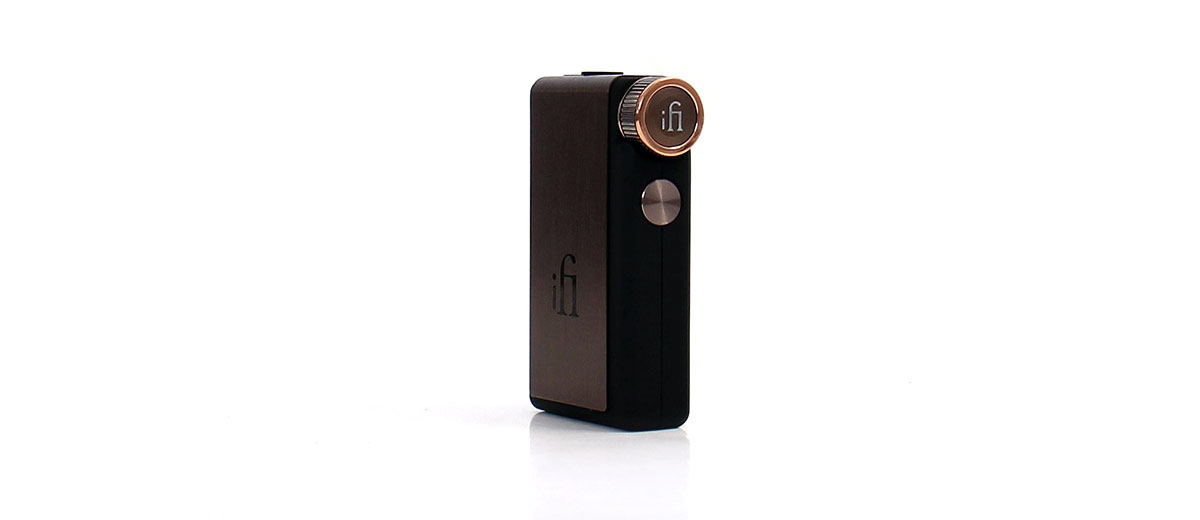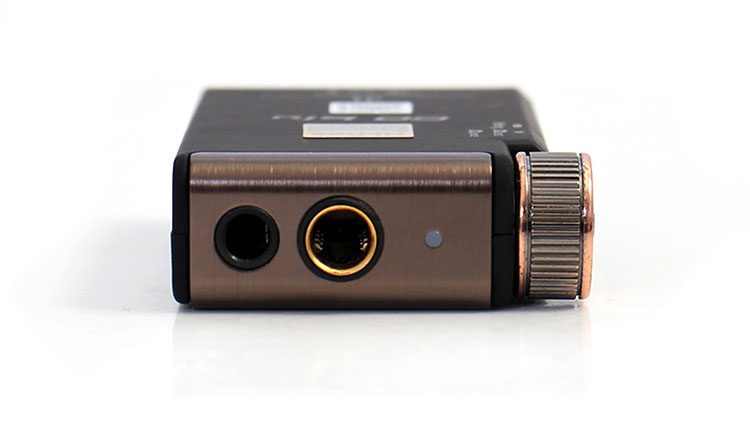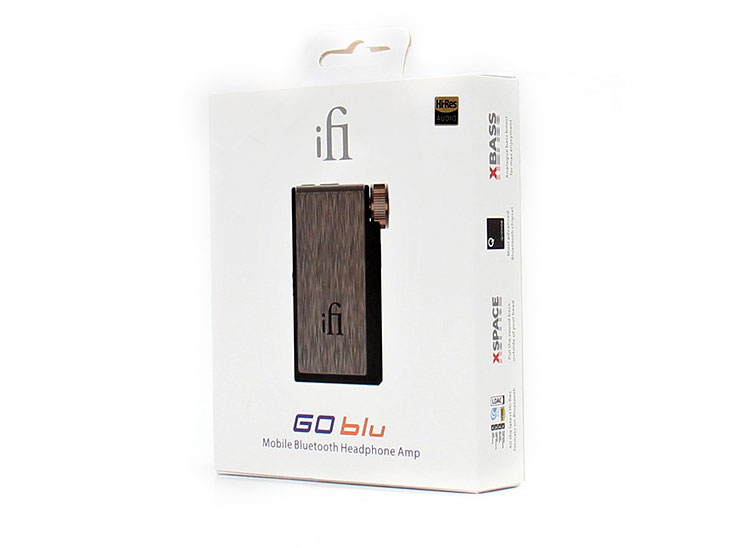Sound Impressions
There is a high amount of dynamic range and a good amount of forwardness here. It seems aggressively tuned but not overly exaggerated taking it to a point of being bothersome and it seems the upper midrange and the lower section of the high frequencies seem to be the most prominent.
Power, clarity, and timbre are both above average for a device this size. However, there is very little in terms of a veil or compression except for some small amounts of residual hiss at medium to high volume levels.
Hiss is only noticeable with very sensitive IEMs but trust me when I say you can go beyond IEMs with this device because it has plenty of power and then some. One thing to note is that there is no gain control so if there is hiss you cannot do much about it.
Bass seems forceful and punchy but the very bottom octave seems shy. However, with a device of this type, that might help some with battery life and sometimes fidelity since there are no wasted power-producing subsonic tones. This generally cleans up the main bass lines and tightens things up keeping the bass area nice and tidy.
The midrange and treble response, on the other hand, seem forward and in general, the sound signature reminds me of the original Hip-dac that still had a touch of that common warm iFi Audio character but seemed more aggressively tuned compared to for example the black or the iDSD signature series.
Soundstage remains very realistic along with placement compared to other comparably powered micro DACs. There is a good amount of depth, width, and height but elements seem slightly narrow and things seem more focused and contained within their assigned spaces.
Wireless Performance
Pairing & Range
If you own a mobile device capable of transmitting a high-quality LDAC signal then it would make a good pairing because to get the full benefit from the GO blu high bit rate BT codec capability you obviously need to feed it such a signal.
I did pair it with the FiiO BTA30 most times and you could clearly tell the difference when you switch over to lower bit rate codec formats.
I was able to move around the house some but the range was not all there. The sound quality was very good however and difficult to distinguish between the Bluetooth and the USB DAC input.
The GO blu never gave me pairing issues and worked fine with my phones, my FiiO BTA30 plus just a regular built-in BT receptor off my laptop. Since the GO blu recognizes almost every Bluetooth codec out there it seemed to work well with everything I had.
But there seems to be a reduced amount of reception distance since I could only get around 11 feet away from the source and any further out would cause massive dropouts. I think it has to do with the fact that you cannot select the BT codec and I did use it mostly with an LDAC signal which because of the higher bit rates tends to have shorter reception distances on similar devices.
Latency
Latency was on the somewhat high side and for some reason or another, I could not detect the GO blu on my PC within the iFi Audio driver app to adjust latency like their other gear. This needs to be addressed and perhaps it will since iFi Audio promises future firmware updates.
But in general, this device was designed for sound quality and music listening and latency issues only matter with movie watching or videos with facial shots and speech.
Wired Performance
OTG
To be honest I was not massively impressed with the GO blu Bluetooth performance but found out it excels at being a micro dongle DAC amplifier. Just get a short data transfer dual USB-C cable, connect one end to your OTG capable phone and the other to the GO blu and turn on the GO blu power and it becomes a self-powered dongle DAC.
I did find it quite odd that iFi Audio did not include a wire for this purpose and use since the GO blu excels at being a dongle DAC but the wire is very common and obtainable almost anywhere today so get one if you buy a GO BLU.
The best part about this function is that not only that you get the full fidelity output capability off the two headphone jacks when you bypass the Bluetooth section and go straight to the DAC but since the unit has its own battery it seems to be way easier on the battery life on your phone compared to other dongles which work off the phone’s own battery power to operate.
USB DAC
This is another function the GO blu does very well and iFi Audio does include the wire for this particular type of use but it seems short and some full-sized PC owners might have trouble reaching around to the back in certain cases. It seems the wire is more suitable for laptop use.
Either way, the GO blu makes a great USB DAC especially since it’s so small, does not require a fancy power source, and manages to sound great off any PC or laptop.
Select Comparisons
Hidizs H2
$49
Technical
The Bluetooth receiver dongle is a new segment. I could have waited to obtain perhaps the FiiO BTR5 or an Ear Studio ES100 but I know our readers want the rundown quickly on the GO blu but I only have one similar device on hand personally and that’s the Hidizs H2.
I really like this little guy and do not let the small numbers in the spec sheet fool you because it performs well in most aspects.
If you want to venture into this type of audio device avenue then this one is a no-brainer purchase because at the asking price you get basically the same functionality minus a few features.
I really like the app that you can download from Hidizs to control the H2 and offers features that are lacking on the GO blu like an equalizer with a tradeoff that it only works using a 48 kHz bit depth.
Design
The very small main body construction is made from resin and it seems the same material was used for the buttons. The construction and design remind me somewhat of my old FiiO E6.
Actually, if you add Bluetooth and a DAC section to the FiiO E6 you would probably get the same performance with a touch of extra clarity due to the source being a DAC and not an amplified 3.5mm out from a phone.
Performance
There is however one area the Hidizs H2 excels in is Bluetooth reception. I was completely surprised at how much distance between the source and the H2 I could get contrary to the GO BLU.
However, that’s where the winning points for the H2 end. You simply cannot compare an 8mW output with the 245mW output available on the 4.4mm balanced output connection. I actually think this Hidizs spec is a typo because the H2 has a built-in MAX97220 amp chip which is rated to have a maximum output rating of 130mW.
The amount of power the GO blu has pushes it ahead of almost every Micro DAC dongle and definitely past the H2 in headphone drivability.
Our Verdict
The GO blu to me is a piece of gear that you purchase for a particular function and then find out you like it more whilst performing other functions. Versatility is off the charts for many different scenarios.
The GO blu can act as a Bluetooth receiver yes, with all the codec capability you could want but it really excels as a micro-DAC dongle, a desktop, or a laptop DAC amp combo and as a sound card replacement. That’s four scenarios in where the GO blu can perform well.
It also seems conservatively rated in power output and it can push some headphones way better when I compared it to other dongles and devices with similar output ratings. Along with the versatility, Xbass and XSpace make the GO blu a good all-arounder with my only desire being better Bluetooth reception.
First-time audiophile buyers and old-timers alike will enjoy the GO blu for certain. I personally like this little guy for more than one reason, not just versatility and good sound but for its hefty construction also and it’s appropriately named a pocket rocket because that’s what it is.
iFi Audio GO blu Technical Specifications
| Chipset | DAC Bluetooth |
Cirrus Logic CS43131 Qualcomm QCC 5100 |
| Inputs | Wireless Wired |
Bluetooth 5.1 ( AAC, SBC, aptX, aptX HD, aptX Adaptive, aptX LL, LDAC, LHDC/HWA Codec) USB-C (24/96) |
| Headphone Outputs | Balanced SE |
4.4mm 3.5mm |
| Power Output | Balanced SE |
245mW @ 32Ω; 5.6v @ 600Ω 165mW @ 32Ω; 2.8v @ 600Ω |
| Output Impedance | Balanced SE |
<1Ω <1Ω |
| SNR | Balanced SE |
111dB(A) @ 0dBFS 116.5dB(A) @ 0dBFS |
| DNR | Balanced/SE | >120dB(A) |
| THD + N | Balanced SE |
<0.009% @ (6.5mW/2.0v@600Ω) <0.03% @ (100mW/1.27v@16Ω) |
| Frequency Response | 20Hz – 45kHz (-3dB) | |
| Power System | Lithium-polymer 450mAh approx. ~8 hours (depending upon volume and headphones)Charging via USB-C, BC V1.2 compliant up to 1000mA charging current and 6.3 volts |
|
| Dimensions | 54 x 34 x 13 mm 2.1′ x 1.3′ x 0.5′ |
|
| Weight | 27g (0.95 oz) | |
| Warranty period | 12 months |






